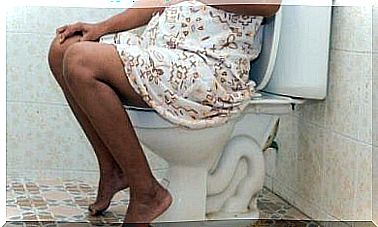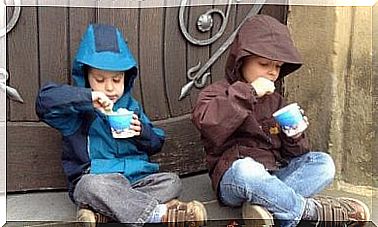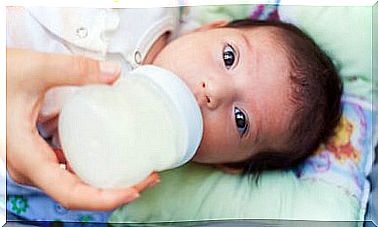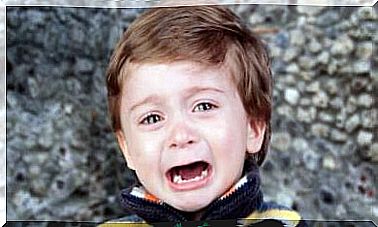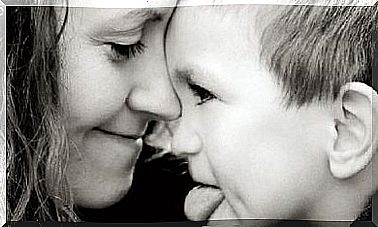Common Dental Problems In Children – You Are Mom
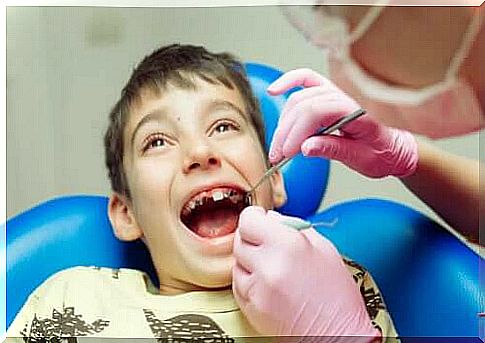
Some dental problems are common in children, but almost all of them are preventable. When they appear, normal functions of the mouth, such as chewing, phonation and swallowing, are impaired.
In the following lines, we introduce you to the most common dental problems in children, along with their causes and treatments. We also give you some tips for taking care of your child’s mouth.
Common dental problems in children
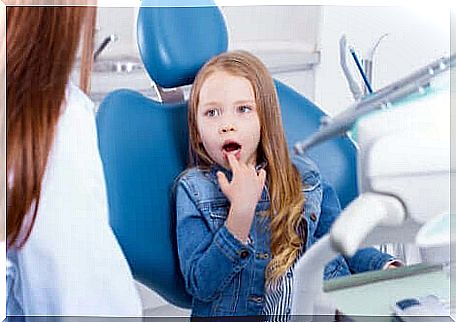
Caries
Among the dental problems in children, these are the most common. It is the loss of mineral tissue in the teeth by the action of acids produced by bacteria in the mouth.
At first, small white spots are visible on the surface of the teeth. As the decay progresses, the stain changes color to black or brown and causes tissue loss. This then forms cavities or holes in the teeth.
As we have mentioned, the loss of the minerals that form the tooth takes place due to the action of acids produced by bacteria present in the mouth during the fermentation of sugars in the diet. Poor oral hygiene as well as a high consumption of sugars predispose to the appearance of cavities.
On the other hand, there is a particular form of cavities in smaller children called “early childhood cavities” or “ bottle cavities ”. It is associated with the regular consumption of sweetened milk or a lack of hygiene after meals. The permanence of sugar on the surface of the teeth promotes the appearance of these cavities which progress rapidly, especially in the anterior teeth.
Consequences in children
The presence of cavities as well as their progression in the absence of treatment, leads to several complications in the life of the little one:
- Pain: When the depth of the lesion increases, the decay moves closer to the dental pulp where the nerves are located. This is what generates sensitivity and pain.
- Destruction and loss of the tooth: The progression of the lesion wears down and can even break the tooth. At the same time, this causes displacement of neighboring teeth, malocclusions as well as problems with biting.
- Infections: Cavities can be complicated by infection of the tooth or nearby hard or soft tissue.
- Permanent tooth damage: When decay occurs on a temporary tooth, it can affect the proper formation of the tooth underneath.
- Low self-esteem and social problems: Broken and stained teeth can be a source of teasing that complicates the child.
Treatment for cavities
The type of treatment to treat cavities will depend on the size and how long it takes. Incipient caries can be treated with the therapeutic application of fluoride.
Regarding cavities with cavities and tissue loss, it is necessary to clean and restore with fillings. Whatever the type of decay, it is always necessary to treat it and slow down its progression to avoid complications.
Dental trauma
The blows on teeth are another common dental problems in children. They usually take place when the little ones start to walk. They are also associated with accidents during games or sports. The teeth most often affected are the upper incisors because they are the most exposed.
Trauma can affect both baby teeth and permanent teeth. Part of the dental crown can be shattered, broken completely, displaced or even pushed out of the mouth.
The behavior to adopt generally depends on the type of tooth affected. However, in the event of a blow in the mouth, it is advisable to go to the dentist immediately. If the tooth has been expelled, it should be found and transported in milk or physiological saline.
The professional will then examine the affected tissue and decide on the best treatment. This can range from a simple application of fluoride as well as posterior checks, to restorations or fillings, lead treatments to the reimplantation of the tooth in its place and its immobilization with splints.
As we mentioned, it is necessary to immediately go to the dentist. The faster you act, the better the prognosis.
Malocclusions, common dental problems in children
Misaligned teeth as well as difficulty biting normally are common dental problems in children. It is important to observe the position of the tooth as it grows, as well as the relationship of the upper teeth to the lower teeth when biting. This is useful for detecting any abnormalities in the occlusion of the pups.
In addition, a home follow-up and regular examinations with the dentist help to discover these problems earlier. The treatment will then be easier and more comfortable for the child.
Here are some of the causes of dental malocclusions in children:
- Dysfunctional habits such as finger sucking, prolonged use of the pacifier or bottle, and mouth breathing.
- Absence or premature loss of milk teeth.
- Hereditary and genetic factors.
- Bruxism.
Treatments will depend on the type and degree of malocclusion as well as the child’s age and type of dentition. Depending on these parameters, it is possible to correct with dental appliances, fixed orthodontics with braces or invisible orthodontics.
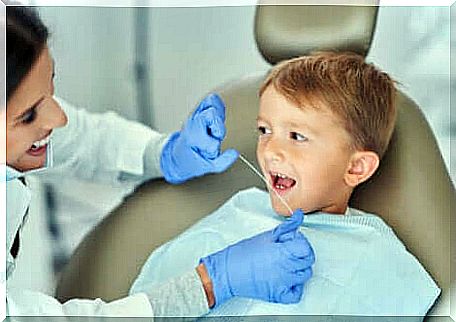
Gingivitis
The presence of bacterial plaque around the tooth can lead to inflammation of the gums. They turn red, bleed easily, are painful and cause bad breath.
The cause of this dental problem is poor oral hygiene. The use of a toothbrush, dental floss, as well as a visit to the dentist, are usually sufficient to treat this condition.
How to prevent common dental problems in children?
Practicing good oral hygiene habits as well as healthy behaviors help keep the mouth in good condition. Here are some tips for preventing dental problems in children:
- Maintain good oral hygiene: brush children’s teeth two or three times a day with a soft toothbrush and toothpaste with fluoride. Complete with dental floss, and if the dentist recommends it, with a mouthwash.
- Avoid cariogenic foods: reduce or avoid the consumption of foods rich in sugars. It is preferable to give a varied diet rich in nutrients.
- Eliminate harmful habits: in the case of children who suck their thumbs, eat their nails, breathe through their mouths, use the pacifier or bottle for too long, it is necessary to look for alternatives to stop these harmful practices for teething.
- Visit the dentist: Regular and early visits to the dentist help maintain a healthy mouth. The professional will detect any problem in time and will give oral hygiene advice.
Dental problems in children can be avoided
Dental problems in children can occur at an early age. There are indeed several pathologies that manifest in the mouths of children.
However, a healthy mouth is necessary for the correct development of children’s lives. For this, adequate oral hygiene, healthy practices and dental consultations will help keep a beautiful smile.
